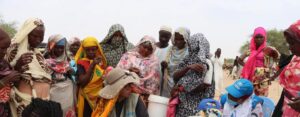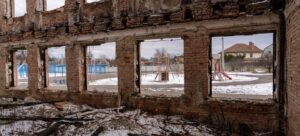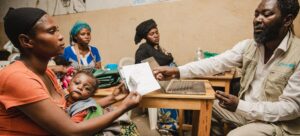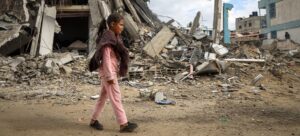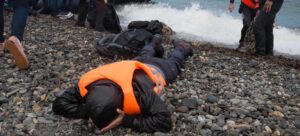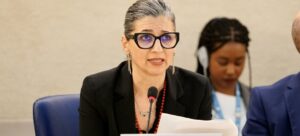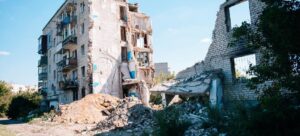Francesca Albanese was speaking at the UN Human Rights Council in Geneva, where she presented her latest report, entitled ‘Anatomy of a Genocide’, during an interactive dialogue with Member States.
“Following nearly six months of unrelenting Israeli assault on occupied Gaza, it is my solemn duty to report on the worst of what humanity is capable of, and to present my findings,” she said.
“There are reasonable grounds to believe that the threshold indicating the commission of the crime of genocide…has been met.”
Three acts committed
Citing international law, Ms. Albanese explained that genocide is defined as a specific set of acts committed with the intent to destroy, in whole or in part, a national, ethnic, racial or religious group.
“Specifically, Israel has committed three acts of genocide with the requisite intent, causing seriously serious bodily or mental harm to members of the group, deliberately inflicting on the group conditions of life calculated to bring about its physical destruction in whole or in part, and imposing measures intended to prevent birth within the group,” she said.
Furthermore, “the genocide in Gaza is the most extreme stage of a long-standing settler colonial process of erasure of the native Palestinians,” she continued.
‘A tragedy foretold’
“For over 76 years, this process has oppressed the Palestinians as a people in every way imaginable, crushing their inalienable right to self-determination demographically, economically, territorially, culturally and politically.”
She said the “colonial amnesia of the West has condoned Israel’s colonial settler project”, adding that “the world now sees the bitter fruit of the impunity afforded to Israel. This was a tragedy foretold.”
Ms. Albanese said denial of the reality and the continuation of Israel’s impunity and exceptionalism is no longer viable, especially in light of the binding UN Security Council resolution, adopted on Monday, which called for an immediate ceasefire in Gaza.
Arms embargo and sanctions against Israel
“I implore Member States to abide by their obligations which start with imposing an arms embargo and sanctions on Israel, and so ensure that the future does not continue to repeat itself,” she concluded.
Special Rapporteurs and independent experts like Ms. Albanese receive their mandates from the UN Human Rights Council. They are not UN staff and do not receive payment for their work.
Israel ‘utterly rejects’ report
Israel did not participate in the dialogue but issued a press release stating that it “utterly rejects” Ms. Albanese’s report, calling it “an obscene inversion of reality”.
“The very attempt to level the charge of genocide against Israel is an outrageous distortion of the Genocide Convention. It is an attempt to empty the word genocide of its unique force and special meaning; and turn the Convention itself into a tool of terrorists, who have total disdain for life and for the law, against those trying to defend against them,” the release said.
Israel said its war is against Hamas, not Palestinian civilians.
“This is a matter of explicit government policy, military directives and procedures. It is no less an expression of Israel’s core values. As stated, our commitment to uphold the law, including our obligations under international humanitarian law, is unwavering.”
‘Barbaric aggression continues’: Palestine Ambassador
The Permanent Observer of the State of Palestine to the UN in Geneva, Ibrahim Khraishi, noted that the report provides the historic context of genocide against the Palestinian people.
He said Israel “continues its barbaric aggression” and refuses to abide by the decision of the International Court of Justice (ICJ), issued in January, to take provisional measures in order to prevent the crime of genocide. Israel has also refused to abide by UN General Assembly and Security Council resolutions, including the one adopted on Monday, he added.
“And this means that all recommendations in the report of the Special Rapporteur shall be implemented, and practical measures should be taken to prevent the export of weapons, to boycott Israel commercially and politically, and to implement mechanisms of accountability,” he said.
© UNRWA/Mohammed Alsharif
Displaced Palestinians walk through the Nour Shams camp in the West Bank.
Israeli settlement expansion
Separately, the UN Deputy High Commissioner for Human Rights, Nada Al-Nashif, presented a report on Israeli settlements in the Occupied Palestinian Territory during the period from 1 November 2022 to 31 October 2023.
“The reporting period has seen a drastic acceleration, particularly after 7 October 2023, of long-standing trends of discrimination, oppression and violence against Palestinians that accompany Israeli occupation and settlement expansion bringing the West Bank to the brink of catastrophe,” she said.
There are now around 700,000 Israeli settlers in the West Bank, including East Jerusalem, who live in 300 settlements and outposts, all of which are illegal under international humanitarian law.
Expansion of existing settlements
The size of existing Israeli settlements has also expanded markedly, according to the report by the UN human rights office, OHCHR.
Approximately 24,300 housing units within existing Israeli settlements in the West Bank in Area C were advanced or approved during the reporting period – the highest on record since monitoring began in 2017.
The report observed that policies of the current Israeli Government “appear aligned, to an unprecedented extent, with the goals of the Israeli settler movement to expand long-term control over the West Bank, including East Jerusalem, and to steadily integrate this occupied territory into the State of Israel,” Ms. Al-Nashif said.
Transfer of power
During the reporting period, Israel took steps to transfer administrative powers relating to settlements and land administration from the military authorities to Israeli government offices, whose primary focus is to provide services within the State of Israel.
“The report therefore raises serious concerns that a series of measures, including this transfer of powers to the Israeli civilian officials, could facilitate the annexation of the West Bank in violation of international law, including the Charter of the United Nations,” she said.
‘Dramatic increase’ in violence
There was also a dramatic increase in the intensity, severity and regularity of Israeli settler violence against Palestinians, accelerating their displacement from their land, in circumstances that may amount to forcible transfer.
The UN recorded 835 incidents of settler violence in the first nine months of 2023, the highest on record. Between 7 and 31 October 2023, the UN recorded 203 settler attacks against Palestinians and monitored the killing of eight Palestinians by settlers, all by firearms.
Of the 203 settler attacks, more than a third involved threats with firearms, including shooting. Furthermore, almost half of all incidents between 7 and 31 October involved Israeli forces escorting or actively supporting Israeli settlers while carrying out attacks.
Blurred lines
Ms. Al-Nashif said the line between settler violence and State violence has further blurred, including violence with the declared intent to forcibly transfer Palestinians from their land. She reported that in cases monitored by OHCHR, settlers arrived masked, armed, and sometimes wearing the uniforms of Israeli security forces.
“They destroyed Palestinians’ tents, solar panels, water pipes and tanks, hurling insults and threatening that, if Palestinians did not leave within 24 hours, they would be killed,” she said.
By the end of the reporting period, Israeli security forces had reportedly handed out some 8,000 weapons to so-called “settlement defence squads” and “regional defence battalions” in the West Bank, she continued.
“After 7 October, the United Nations human rights office documented cases of settlers wearing full or partial Israeli army uniforms and carrying army rifles, harassing and attacking Palestinians, including shooting at them at point-blank range.”
Evictions and demolitions
Israeli authorities also continued to implement eviction and demolition orders against Palestinians based on discriminatory planning policies, laws and practices, including on the grounds that properties lacked building permits.
Ms. Al-Nashif said Israel demolished 917 Palestinian-owned structures in the West Bank, including 210 in East Jerusalem, again one of the fastest rates on record. As a result, more than 1,000 Palestinians were displaced.
“It is noteworthy that out of the 210 demolitions in East Jerusalem, 89 were self-demolitions by their owners to avoid paying fines from the Israeli authorities. This epitomizes the coercive environment that the Palestinians live in,” she said.
The human rights report also documented Israel’s ongoing plan to double the settler population in the Syrian Golan by 2027, which is currently distributed among 35 different settlements.
Beside settlement expansion, commercial activity has been approved, which she said may continue to limit the access of the Syrian population to land and water.

